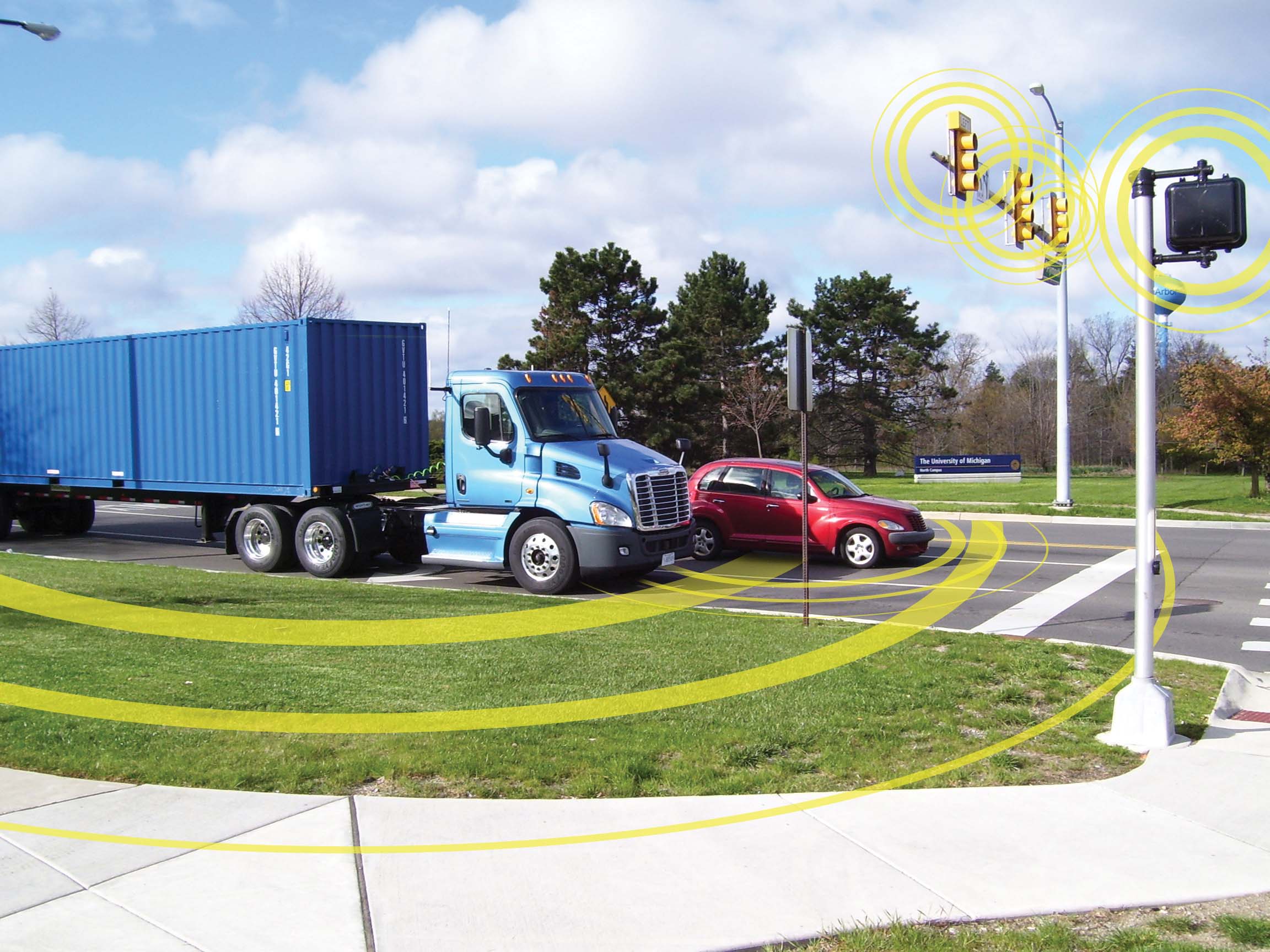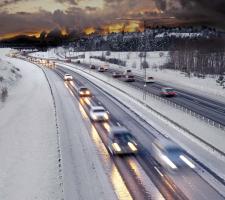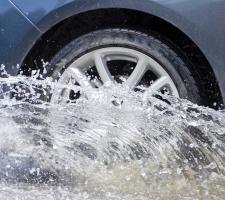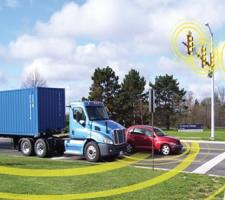
The world is becoming increasingly connected. Thanks to advances in information and communications technology, the cities we live in are becoming ‘smart’, with everything from education to law enforcement managed by integrated tech solutions in a bid to improve quality of life.
Changes to transport and the way we get around will be a pivotal part of the development of true smart cities. From cars that exchange information about traffic to vehicles that drive themselves autonomously, the roads in the cities of the future could be quite different to those we see today.
For this future to become a reality, the collection of accurate weather data collection will be key. This is because, aside from human behaviour, weather is the single most important factor that influences traffic and road safety, meaning this information will be a fundamental part of the development of smart cities.
Weather has a dramatic impact on traffic safety. Figures from America’s Federal Highway Administration (FHWA) show that 22% of road crashes are weather-related – that’s more than 1.25 million incidents and, unfortunately, almost 6,000 deaths per year.
Connected vehicles
According to information technology research and advisory companyWhile connected cars will provide numerous features for improving in-car entertainment and safety, their biggest contribution to the development of truly smart cities will be intelligent traffic. Road congestion is a problem in urban areas the world over. It creates pollution, damaging the environment and generally inconveniencing peoples’ daily lives. Cars with built-in connectivity will help to alleviate this issue by acting as sensors and interacting with intelligent transportation systems that provide drivers with real-time information. These vehicles will not only be able to receive data, but share it too, facilitating an exchange of data that allows city roads to become much more efficient.
In the US, for example, technology has been trialled that will offer drivers the option of paying to enter a high-occupancy toll (HOT) lane if they are about to drive into a congested area. Meanwhile, in China, there are plans to develop a system that can monitor the number of vehicles in one area and divert cars away if capacity is close to being exceeded. This way, traffic jams are avoided before they occur.
While it may not be immediately obvious, access to accurate weather data will be pivotal if traffic is to be successfully managed in this way. Research by the FHWA shows light rain or snow can reduce traffic flow by as much as 13%, while the figure is up to 17% and 64% for heavy rain and heavy snow respectively. With weather conditions having such a significant impact, any intelligent traffic solution will be reliant on accurate weather data if is to successfully predict and manage traffic flows.
Most modern cars already contain basic weather sensor technology that allows the measurement of temperature and aids traction control. More advanced sensors are only currently seen in commercial fleet and government vehicles, but, as connected cars become commonplace and the drive towards smart cities continues, such technology may become readily available in consumer cars, allowing for the exchange of reliable baseline weather data needed to manage traffic intelligently and efficiently. In this scenario, the highly accurate data provided by roadside weather stations will remain key, with the added data provided by connected cars helping to fill in the gaps that currently exist between the weather stations.
Autonomous vehicles
Connected cars will be just the start. The next step in the evolution of our roads is autonomous vehicles - cars that are capable of driving themselves. For a long time, such technology has been limited to the realms of science fiction, but, with each passing year, driverless cars are coming closer to reality.A number of companies are investing heavily in this space. Tesla has already released it’s ‘autopilot’ software update, which uses cameras, radar, ultrasonic sensors and mapping data to allow cars to ‘automatically steer down the highway, change lanes and adjust speed in response to traffic’. Tesla’s approach to autonomous vehicles is gradual, aiming to steadily introduce new features that remove the need for drivers to carry out certain functions. The autopilot function can only be engaged once the car is already moving at a relatively constant speed, has a sense of the cars around it and a map of the area it is traveling through.
Other companies, such as Google, are focused on delivering a fully autonomous car from the start. The tech giant’s autonomous cars have already covered more than 1.5 million miles in test runs in the US, although safety drivers have always been aboard to date.
While there are exciting developments taking place, there has, so far, only been limited discussion about the role weather sensors will play, other than admissions that bad weather presents one of the main obstacles that autonomous vehicles will need to overcome. This technology is essential if self-driving cars are to ever become a reality. Autonomous vehicles will require the ability to assess and adapt to extreme weather conditions if they are to navigate our roads safely.
Whatever other shortcomings they may have, human drivers are able to observe weather conditions and adapt their driving behaviour accordingly (albeit this often isn’t enough to avoid crashes as the FHWA figures show). If autonomous vehicles are to be able to adapt in the same way (if not they will have to be programmed to assume weather-impaired conditions 100% of the time), so accurate and reliable weather data will be key. Autonomous cars will require the ability to receive and process all kinds of data and then interpret it to ensure they are driving safely. Only with reliable and accurate weather sensors that work alongside highly accurate roadside technology, will fully autonomous cars become a reality.
Future cities
What will the cities of the future look like should connected and autonomous cars become a reality? A glimpse of what is possible can be seen in the British city of Exeter. In December 2015, Exeter City Council and Devon County Council joined a consortium led by NTT DATA to help implement a ground-breaking, two-year intelligent transport initiative. Drawing on real-time traffic and weather sensor data, as well as other data sources such as eyewitness and behavioural information, the Engaged Smart Transport project will identify where and why congestion occurs and help to come up with solutions to tackle the issue. It is hoped this will help Exeter’s transport infrastructure cope with a growth plan that will see 12,000 new homes, 60 hectares of new business land and 40,0002m of new retail space added to the city by 2026.According to the United Nations, the world’s urban population will have almost doubled to around six billion by 2050. So what might the urban environments of the future look like once the full potential of such technologies are unlocked? Initially, the rise of connected cars could significantly reduce traffic congestion as the exchange of real-time data allows drivers to make more informed choices to optimise traffic flows - reducing pollution and energy use and providing people with more free time. Should autonomous cars become the norm, these benefits may be even greater. It has been suggested that car ownership may be greatly reduced in the future, with people sharing self-driving vehicles and embracing Mobility as a Service to fulfil their transport needs. This would further reduce the number of cars, deliver environmental and health benefits, free up parking space and, ultimately, make cities better places in which to live.
There are few certainties about cities of the future or the development of intelligent traffic, connected and autonomous vehicles but one thing that is certain, is that they will all have to contend with the effects of weather. So one part of tomorrows’ solutions is already available today although there is currently little evidence that it is entering the thinking of vehicle designers, traffic engineers and city planners. That, like the weather itself, will have to change.
- About the author: Dr. Kevin Petty, Chief Science Officer and Head of Technology at Vaisala. He was previously a senior meteorologist at the National Transportation Safety Board and also worked at the National Center for Atmospheric Research.














